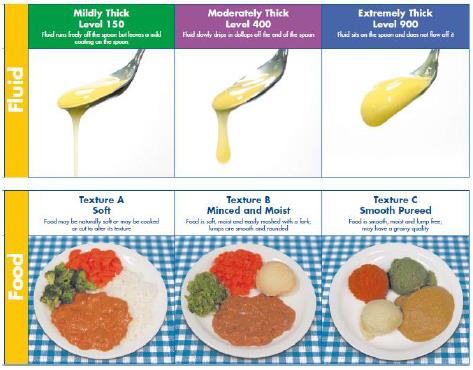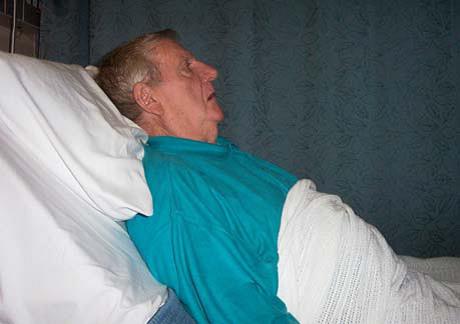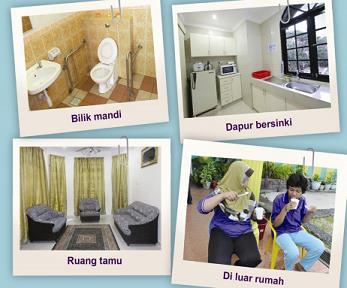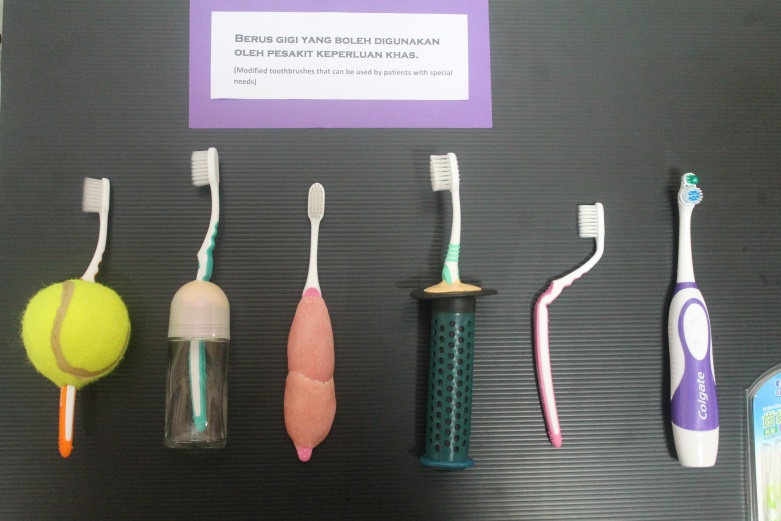Home Oral Care For Person With Swallowing Difficulty
What is swallowing difficulty?
An impaired ability to clear food or drink from the mouth, throat or oesophagus into the stomach
Causes
- Anatomical (Structural defect)
Example: oral cancer, throat cancer, oesophageal cancer, scarring of the oral cavity, throat or oesophageal due to surgery, radiation therapy and chemical burns - Neurological
The anatomy of the oral cavity, throat and oesophageal is intact, but the nerve supply is in defective
Example: stroke, Parkinson’s disease, multiple sclerosis, motor neuron disease, myasthenia gravis, brain injury - Psychological
Some people may feel tightness in the throat when they are experiencing an anxiety attack - Impaired preparatory process prior to swallow
Altered smell or taste sensation, dry mouth, pain on the tongue or cheek, impaired chewing
Signs that a person may have swallowing difficulty
- Food remaining in the mouth or spill from the mouth after a swallow
- Choking, coughing or nasal regurgitation during mealtime
- Taking a long time to complete a swallow
- Feeling of food sticking in the throat
- Throat clearing during meal
- Saliva drooling
- History of recurrent upper respiratory tract infection or pneumonia
Why is it important to have a safe swallow?
- To prevent aspiration
- When we swallow, the food or drinks should be cleared from the mouth into the throat and then into the esophagus
- It is an automatic process
- When a swallow is impaired, some of the food or drinks or even the saliva may enter the trachea and then to the lungs (aspiration)
- This can lead to chest infection which can be life threatening
- To ensure adequate nutrition and hydration
Some people may be experiencing a silent aspiration without showing overt signs of swallowing difficulty.
How are people with swallowing difficulty managed medically?
-
They have to relearn how to swallow safely- the Speech Pathologist will teach swallow strategies
- Positioning
- Sit upright
- Chin tuck position (chin positioned downwards and backwards towards the chest) helps in closure of the airway during a swallow to prevent aspiration
- They may have to modify their diet
-
Example:
Food texture: Soft, Minced and moist or Smooth pureed
Thickened fluid: Mildly thick, Moderately thick or Extremely thick -
Modified food texture and thickened liquid ensures safe passage to the oesophagus and prevents aspiration to the lungs. The degree of modification depends on the level and severity of the swallowing difficulty and risk assessment by the Speech Pathologist.

Modified food texture and fluid consistency for people with swallowing difficulty. (Source: Dieticians Association of Australia and Speech Pathologist Australia 2012).
-
- Tube feeding
Some people may be at a high risk of aspiration during oral feeding and being advised by their doctor to feed via a tube. The tube may be inserted through the nose right down to the stomach (Nasogastric tube), or it may be inserted through the skin on the abdomen straight to the stomach (PEG feeding). Tube feeding maintains nutrition and hydration. People on tube feeding will not be feeding orally or they may do so minimally only for pleasure.
Implications of swallowing difficulty to oral health
- People with swallowing difficulty have poor control of the muscles in and around their mouth. This leads to a poor self-cleansing action and increases the risk of food pouching or pocketing, bad breath, risk of tooth decay and infection.
- Modified diet and thickened liquid stays in the mouth longer and increases the risk of tooth decay and bad breath.
- People on tube feeding have a higher rate of plaque and tartar build up which increases the risk of gum disease and bad breath. This problem is further compounded by the belief of some people, they do not need to brush their teeth since they are not eating orally.
- Saliva drooling is common in people with swallowing difficulty. This occurs not because of excessive saliva production but due to inefficient swallowing of saliva. This can lead to skin infection around the mouth and bad breath.
- Inability to spit may hinder people from brushing their teeth for fear of toothpaste ingestion. This increases the risk of oral infection, tooth decay and gum disease.
Importance of maintaining good oral hygiene
- Everyone should maintain a good oral hygiene for general well-being.
- In order to assist a safe swallow, food needs to be chewed properly. Having a set of good teeth helps in chewing and preparing the food prior to a swallow.
- Prevention of chest infection.
Scientific studies have proven that the oral cavity can serve as a medium for the growth of respiratory bacteria, especially when oral hygiene is poor. When saliva is loaded with these bacteria is aspirated, the risk of chest infection is higher
Tips for oral care
- Mechanical removal of plaque is the simplest, cheapest and most important way to maintain proper oral hygiene.
- Find an appropriate time and place for tooth brushing
- Position
- Sit the person in an upright position.
- Chin tuck.
- Cover the person with a towel so that the clothes will not be wet.
- If the person is unable to sit, lay him/her on the weaker side with the head on a pillow. Cover the pillow with a towel.
- Allow oral secretion to flow out of the mouth.
- Toothbrush and Toothpaste
- Choose a toothbrush with small head and soft bristle.
- If the person is able to brush on his/her own, let the independence be maintained. The toothbrush handle may need to be modified if the person is not able to hold or grip the toothbrush properly.
- An electric toothbrush may be an alternative.
- It is recommended to use fluoridated, non-foaming (Sodium Lauryl Sulfate-free) toothpaste because people with swallowing difficulty may find it too difficult to tolerate the foam (Examples: Biotene dry mouth toothpaste, Parodontax, Sensodyne Pronamel).
- Only use a pea-sized amount of toothpaste.
- If a person is unable to spit, it is still safe to use toothpaste. . It is not necessary to rinse the mouth. After brushing teeth, use a damp cloth (clean) to wipe away any debris. Leaving some toothpaste behind is beneficial so that the fluoride can stay on teeth surfaces longer for cavity prevention. Do not worry if a small amount of toothpaste is swallowed.
- Frequency
It is recommended to brush at least twice a day, morning after breakfast and night before bed. However it is advisable to clean the mouth after every meal to remove any food remnants.
- Diet
- Those who are on thickened fluid
Thickened fluid is available either as pre-mixed (commercially bought) or self-thickened with thickening powder. In a pre-mixed fluid, the amount of sugar content is usually limited. However, those who thicken the liquid themselves should be careful in their selection of drink. Avoid drinks with high sugar content.
- Tube feeding
It is important to maintain tooth brushing even though a person is feeding only via a tube and not eating orally. This prevents plaque and tartar build up (causing gum problem) which can be rapid in people who are tube-fed.
- Those who are on thickened fluid
- People without teeth
- Even though a person has no more teeth, the oral soft tissue and tongue still act as surface for accumulation of bacteria.
- The oral soft tissue and tongue should be cleaned every day.
- Dentures should be cleaned thoroughly. >> Denture – The Wearing and The Caring
- If a person is unable to control the muscles in and around the mouth, it is sometimes better not to wear the denture.
- Please consult your dentist if you have further inquiry.
Conclusion
People with swallowing difficulty have a tendency for aspirating oral secretion. Maintaining good oral hygiene is important not only for general well-being but also to prevent chest infection. Oral care can be undertaken safely as long as safety precautions are undertaken.
References
- Langmore ES, Kimberly AS, Pil SP, Brant EF. Predictors of aspiration pneumonia in nursing home residents. Dysphagia 2002;17(4):298-320.
- Shay K, Scannapieco FA, Terpenning M, Smith BJ, Taylor GW. Nosocomial pneumonia and oral health. Special Care in Dentistry 2005;25(4):179-87.
- Yoneyama T, Yoshida M, Ohrui T, et al. Oral care reduces pneumonia in older patients in nursing homes. Journal of the American Geriatrics Society 2002;50(3):430-33.
| Last Reviewed | : | 11 May 2015 |
| Writer | : | Dr. Eileen Yap Ai Ling |
| Accreditor | : | Dr. Norjehan bt. Yahaya |











